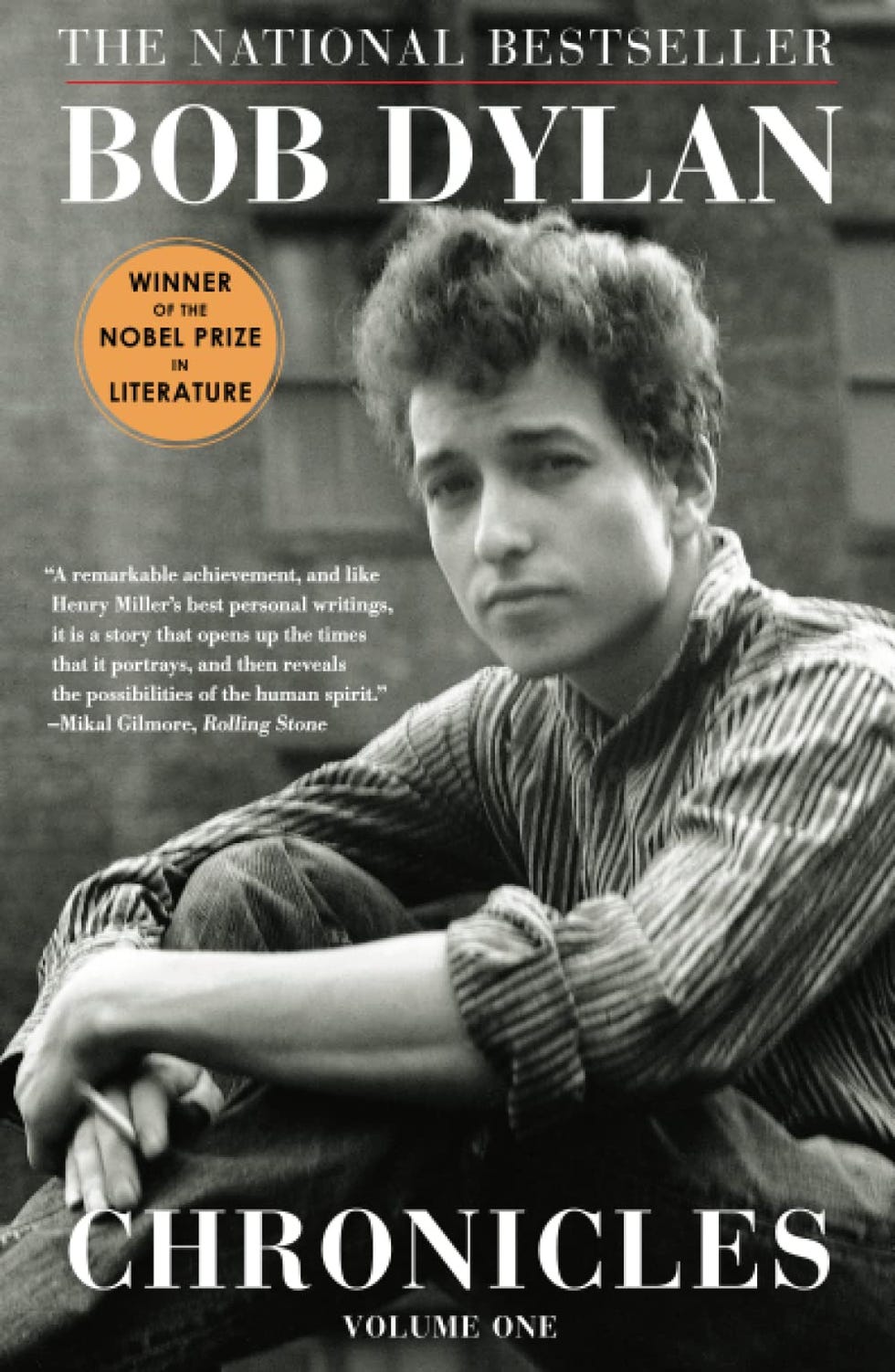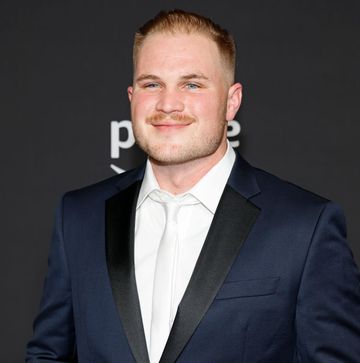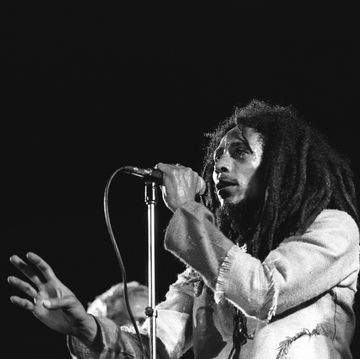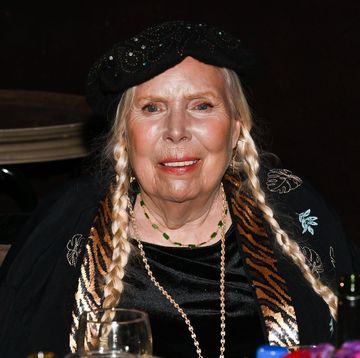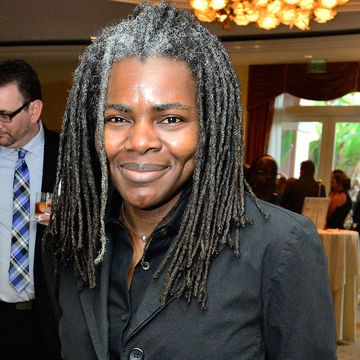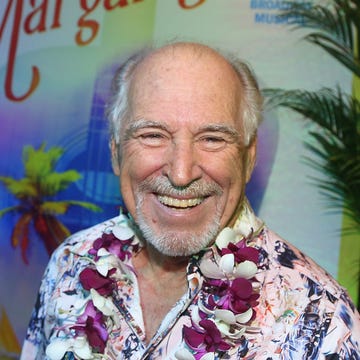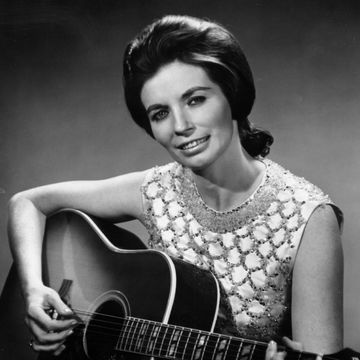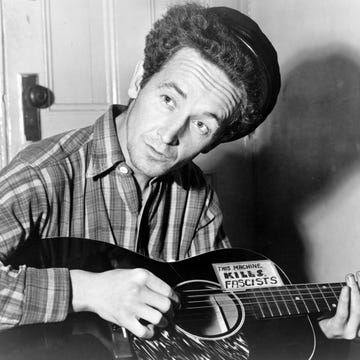1941-present
Bob Dylan Now: Timothée Chalamet Portrays Singer in New Biopic A Complete Unknown
Bob Dylan is the subject of the new biopic A Complete Unknown, with Oscar-nominated actor Timothée Chalamet portraying the music legend. Based on the Elijah Wald book Dylan Goes Electric!, the movie chronicles Dylan’s rise to fame as a folk musician in the early 1960s to his first folk rock concert with electric instruments at the 1965 Newport Folk Festival. A Complete Unknown began showing in Imax on December 18 ahead of its wide theatrical release December 25.
Although Dylan wasn’t directly involved the movie, director James Mangold told Rolling Stone in November 2024 he had a major influence on the screenplay. The music legend offered feedback on the script and even wrote dialogue.
Ahead of its release, the 83-year-old expressed excitement for the movie and praised Chalamet’s acting chops. “Timmy’s a brilliant actor so I’m sure he’s going to be completely believable as me. Or a younger me. Or some other me,” Dylan posted on X.
Who Is Bob Dylan?
Bob Dylan is a legendary folk-rock singer-songwriter known for the songs “Blowin’ in the Wind,” “Knockin’ on Heaven’s Door,” and “Like a Rolling Stone.” The Minnesota native emerged as a prominent figure in the folk music revival with the release of his sophomore album The Freewheelin’ Bob Dylan in 1963 before establishing himself as the definitive songwriter of the protest movement with The Times They Are A-Changin’ the following year. In the mid-1960s, Dylan began incorporating elements of rock into his songs, contributing to the creation of the folk-rock genre. Regarded as one of the most influential songwriters of the 20th century, the 10-time Grammy winner has earned many major awards and is a Rock & Roll Hall of Fame inductee. In 2016, Dylan became the first musician to receive the Nobel Prize in Literature.
Quick Facts
FULL NAME: Bob Dylan
BORN: May 24, 1941
BIRTHPLACE: Duluth, Minnesota
SPOUSES: Sara Dylan (1965-1977) and Carolyn Dennis (1986-1992)
CHILDREN: Maria, Jesse, Anna, Sam, Jakob, and Desiree
ASTROLOGICAL SIGN: Gemini
Where Is Bob Dylan From?
Bob Dylan was born Robert Allen Zimmerman on May 24, 1941, in Duluth, Minnesota, to parents Abram and Beatrice Zimmerman. After his father contracted polio, the family moved to the town of Hibbing, where Bob and his younger brother, David, were raised.
Growing up, Bob showed an interest in music at an early age. He listened to the Grand Ole Opry radio show and taught himself to play piano and guitar. As a teenager, he was influenced by early rock stars like Elvis Presley, Jerry Lee Lewis, and Little Richard, whom he used to imitate on the piano at high school dances.
While attending Hibbing High School, young Bob formed several bands. This included the Golden Chords as well as a group he fronted under the pseudonym Elston Gunn. At one point, he also considered the stage name Robert Allyn. He graduated high school in 1959.
Next, Bob enrolled in the University of Minnesota in Minneapolis. Inspired by folk artists like Woody Guthrie, the aspiring musician began performing folk and country songs at local cafés under the name Bob Dillon. The singer dropped out of college in 1960 and moved to New York City in January 1961 to pursue a career in music.
It was around this time that he changed the spelling of his stage moniker. Despite a popular myth to the contrary, the pseudonym wasn’t inspired by Welsh poet Dylan Thomas—who Bob later professed to dislike—but likely by the main character from the popular Western television series Gunsmoke. He legally changed his name from Robert Allen Zimmerman to Bob Dylan in August 1962.
Music Career
After moving to New York, Dylan immersed himself in the Greenwich Village folk music scene, becoming a regular in folk clubs and coffeehouses. He began writing songs at an astonishing pace and met a host of other musicians, including his idol, Woody Guthrie. The folk icon was hospitalized with a rare hereditary disease of the nervous system, and Dylan regularly visited him and wrote him the tribute “Song to Woody.”
In September 1961, Dylan received a rave review in The New York Times for one of his Greenwich Village performances. Critic Robert Shelton called the then-20-year-old a “bright new face in folk music” in his review and praised his “distinctive” song style. That same month, folk singer Carolyn Hester invited Dylan to play harmonica on her third album, produced by Columbia Records. His work on the record caught the attention of Columbia producer John Hammond, who signed Dylan to the label in October.
The singer released his first self-titled album in March 1962. The debut record showcased Dylan’s gravel-voiced singing in a number of traditional folk songs and covers of blues tracks. Beyond that, it contained only two original songs: “Talkin’ New York” and “Song to Woody.” While the album didn’t perform well commercially, selling only 5,000 copies in its first year, it still earned him a Grammy Award nomination for Best Folk Recording.
Success with The Freewheelin’ Bob Dylan
The 1963 release of The Freewheelin’ Bob Dylan marked Dylan’s emergence as one of the most original and poetic voices in the history of American popular music. Now part of the National Recording Registry, the album included two of the most memorable folk songs of the era: “A Hard Rain’s A-Gonna Fall” and “Blowin’ in the Wind,” which later became a huge hit for the folk trio Peter, Paul and Mary. His next album, The Times They Are A-Changin’, firmly established Dylan as the definitive songwriter of the ’60s protest movement, a reputation that only increased after he became involved with one of the movement’s established icons, Joan Baez, in 1963.
While his romantic relationship with Baez lasted only two years, it benefited both performers immensely in terms of their music careers. Dylan wrote some of Baez’s best-known material, and Baez introduced him to thousands of fans through her concerts. By 1964, Dylan was playing 200 concerts annually but had become tired of his role in the folk protest movement. Another Side of Bob Dylan, recorded in 1964, was a much more personal, introspective collection of songs, far less politically charged than his previous efforts.
Reinventing His Image
In July 1965, Dylan scandalized many of his folkie fans by recording the half-acoustic, half-electric album Bringing It All Back Home, backed by a nine-piece band. On July 25, 1965, he was famously booed at the Newport Folk Festival in Rhode Island when he performed electrically for the first time. The albums that followed—1965’s Highway 61 Revisited, which included the seminal rock song “Like a Rolling Stone,” and 1966’s two-record set Blonde on Blonde—represented Dylan at his most innovative. With his unmistakable voice and unforgettable lyrics, Dylan brought the worlds of music and literature together as no one else had.
Over the course of the next three decades, Dylan continued to reinvent himself. Following a near-fatal motorcycle accident in July 1966, Dylan spent almost a year recovering in seclusion. His next two albums—John Wesley Harding (1967), which included “All Along the Watchtower” that guitar great Jimi Hendrix later famously recorded, and the unabashedly country-tinged Nashville Skyline (1969)—were far more mellow than his earlier works. Critics blasted the two-record set Self-Portrait, released in June 1970, and Tarantula, a long-awaited collection of prose poetry published the following year. In 1973, Dylan appeared in Pat Garrett and Billy the Kid, a movie directed by Sam Peckinpah. He also wrote the film’s soundtrack, which became a hit and featured the now-classic song “Knockin’ on Heaven’s Door.”
Dylan began his first full-scale tour since his accident in 1974; he embarked on a sold-out nationwide tour with his longtime backup musicians, the Band. An album he recorded with the Band, Planet Waves (1974), became his first No. 1 album ever. He followed these successes with the celebrated 1975 album Blood on the Tracks and 1976’s Desire, both of which hit No. 1 as well. Desire included the song “Hurricane” that Dylan wrote about boxer Rubin “Hurricane” Carter who was then serving life in prison after what many felt was a wrongful conviction of triple homicide in 1967. Dylan was one of many prominent public figures who helped popularize Carter’s cause, leading to a retrial in 1976 when he was again convicted. A judge eventually threw out the convictions in 1985.
Desire also featured the song “Sara,” which was his plaintive but unsuccessful attempt to win back his first wife, Sara Lownds. Following their painful split, Dylan reinvented himself again, declaring in 1979 that he was a born-again Christian, despite being raised Jewish. The evangelical Slow Train Coming from that year was a commercial hit. The track “Gotta Serve Somebody” won Dylan his first Grammy Award as a solo artist for Best Male Rock Vocal Performance. The tour and albums that followed were less successful, however, and Dylan’s religious leanings soon became less overt in his music.
Rock Star Status
Beginning in the 1980s, Dylan began touring full-time, sometimes with fellow legends Tom Petty and the Heartbreakers and the Grateful Dead. Notable albums during this period included Infidels (1983); the five-disc retrospective Biograph (1985); Knocked Out Loaded (1986); and Oh Mercy (1989), which became his best-received album in years.
The decade also saw Dylan’s name become enshrined in music history. He was inducted into the Songwriters Hall of Fame in 1982 followed by the Rock & Roll Hall of Fame in 1988. In his speech about Dylan at the latter induction ceremony, fellow music Bruce Springsteen said: “Bob freed the mind the way Elvis freed the body... He invented a new way a pop singer could sound, broke through the limitations of what a recording artist could achieve and changed the face of rock and roll forever.”
Also in 1988, Dylan formed the Traveling Wilburys with former Beatle guitarist George Harrison, singer Roy Orbison, Tom Petty, and Electric Light Orchestra’s Jeff Lynne. The supergroup recorded two albums together and netted one Grammy Award, Dylan’s third overall.
Major Grammy Wins and More Honors
In October 1993, Dylan returned to his folk roots with World Gone Wrong, which won him a Grammy for Best Traditional Folk Album. His 1997 album, Time Out of Mind, reestablished the one-time folk icon as one of rock’s preeminent wise men as it produced three Grammy Awards. Among the trophies was the coveted Album of the Year title.
Dylan received the Kennedy Center Honors Lifetime Achievement Award, considered the nation’s highest award for artistic excellence, in 1997. Three years later, he recorded the single “Things Have Changed” for the soundtrack of the movie Wonder Boys (2000), starring Michael Douglas. The song won Dylan a Golden Globe and an Academy Award for Best Original Song.
He continued his vigorous touring schedule, including a memorable performance in 1997 for Pope John Paul II in which he played “Knockin’ on Heaven’s Door.” Two years later, he went on tour with Paul Simon of Simon & Garfunkel. Showing no signs of slowing down as he turned 60, the musician continued to perform live throughout the first decade of the 21st century.
His first album of the new millennium was Love and Theft (2001). He self-produced the Grammy-winning record under the name Jack Frost. In 2006, Dylan released the studio album Modern Times, and it debuted at the top of the Billboard 200. A mixture of blues, country, and folk, the album was praised for its rich sound and imagery. Several critics also remarked that the album had a playful, knowing quality. Modern Times resulted in two more Grammy Awards, bringing Dylan’s career total to 10.
Most Recent Work
Together Through Life arrived in 2009 and marked Dylan’s fifth No. 1 album on the mainstream chart. Three years later, the music icon delivered the Grammy-nominated Tempest (2012) before his longest hiatus from new original work to date.
Even so, Dylan kept producing music through compilations as well as unreleased and live recordings. He also followed up with the cover albums Shadows in the Night (2015) and Fallen Angels (2016). Another celebration of classics was the three-disc Triplicate (2017) that featured 30 standards from the Great American Songbook, including “Stormy Weather,” “As Time Goes By,” and “The Best Is Yet To Come.”
In June 2020, Dylan returned with his 39th studio album, Rough and Rowdy Ways, his first album of original songs since 2012. The record debuted at No. 2 on the Billboard 200 chart. Its lead single, “Murder Most Foul,” is a 17-minute track about the assassination of John F. Kennedy. It became Dylan’s first song to top any Billboard chart, leading the Rock Digital Song Sales chart shortly after its release. At the time, the music legend told The New York Times he was surprised the lengthy song was his first No. 1 hit.
His most recent project, Shadow Kingdom, came out in June 2023. The 13-track album consists of new recordings of Dylan’s earlier work as well as the instrumental number “Sierra’s Theme.” To date, Dylan has released 40 studio albums and sold the equivalent of 36 million copies in the United States alone.
Top Songs
Dylan has delivered several hits throughout his 60-year career. While his success hasn’t always translated over to the charts, he has gained critical acclaim for his songwriting since the release of the protest song “Blowin’ in the Wind” in 1962. Other hits from the 1960s included the psychedelic track “Mr. Tambourine Man,” the confrontational rock song “Like a Rolling Stone” that came in at No. 2 on the Billboard Hot 100, and “Lay Lady Lay.” That rare Top 10 hit saw Dylan trade in his trademark gravelly voice for a warmer tone.
Perhaps one of the icon’s best known songs is “Knockin’ On Heaven’s Door,” which Dylan wrote for the 1973 Western Pat Garrett and Billy the Kid. It became a global hit shortly after release and remains one of Dylan’s most-covered songs.
His other top songs include “Rainy Day Women #12 & 35,” “Positively 4th Street,” “It’s Alright, Ma (I’m Only Bleeding),” “Tangled Up In Blue,” “Hurricane,” the Grammy-winning “Gotta Serve Somebody,” “All Along the Watchtower,” and “Make You Feel My Love.”
Historic Nobel Prize
The legendary singer-songwriter made history in October 2016 when he was awarded the Nobel Prize in Literature. It was the first time the honor was bestowed on a musician. Dylan was also the first American to receive the honor since novelist Toni Morrison in 1993. The Swedish Academy lauded the musician “for having created new poetic expressions within the great American song tradition.”
The Nobel is one of many awards and honors Dylan has received in his career. He won a Pulitzer Prize in 2008 “for his profound impact on popular music and American culture, marked by lyrical compositions of extraordinary poetic power.” In 2012, Barack Obama presented the musician with a Presidential Medal of Freedom. Dylan is the further recipient of a 1997 Kennedy Center Honors Lifetime Achievement Award, the 2000 Academy Award for Best Original Song, a 2001 Golden Globe, and a 2009 National Medal of Arts.
His 10 Grammy Awards out of 38 nominations include one trophy for Album of the Year, bestowed upon his 1997 album Time Out of Mind. He additionally received the Recording Academy’s Lifetime Achievement Award in 1991. Dylan is an inductee to the Songwriters Hall of Fame and the Rock & Roll Hall of Fame.
Ex-Wives and Children
In addition to his short and complicated relationship with Joan Baez that abruptly ended in 1965, Dylan was at one point romantically linked to another singer: gospel icon Mavis Staples. He wished to marry her, though the two never took the trip down the aisle.
In November 1965, Dylan quietly married his first wife, Sara Lownds, who was already pregnant with their first child, Jesse. The couple moved to Woodstock, New York, and later welcomed three more children: Anna, Samuel, and Jakob. Dylan also adopted Lownds’ daughter, Maria, from a previous marriage. Jakob eventually became lead singer of the popular rock group the Wallflowers.
Dylan and his family relocated to Malibu, California, in 1973 but still kept a place in New York City, where the singer took art classes. Dylan later said these classes were to blame for the tensions in his marriage that resulted in a separation in 1975. Following their split, he wrote the song “Sara” in an unsuccessful attempt to get back together. Dylan and Lownds divorced in June 1977.
Nearly a decade later, Dylan remarried. He wed singer Carolyn Dennis in June 1986. Five months earlier, Dennis had given birth to their daughter, Desiree. The pair divorced in October 1992, but their marriage and child didn’t become public knowledge until Howard Sounes’ biography Down the Highway: The Life of Bob Dylan was published in 2001. Although the book portrayed Dylan has an absent father, Dennis issued a statement refuting the claim. “To portray Bob as ‘hiding his daughter’ is just malicious and ridiculous,” she said. “That is something he would never do. Bob has been a wonderful, active father to Desiree.”
Net Worth
As of August 2024, Dylan has an estimated net worth of $500 million, according to Celebrity Net Worth. Much of his wealth comes from selling his entire songwriting catalog in 2020. Universal Music Publishing Group bought his catalog for around $300 million. A year later, Dylan sold his back catalog of recorded music to Sony Music Entertainment for an estimated $150 to $200 million.
The musician is also the owner of the whiskey company, Heaven’s Door, which launched in 2018. It was hit with a trademark infringement lawsuit from Heaven Hill Distillery over its logo not long after its public launch.
Artwork
Dylan’s creative talents aren’t constrained to music alone. His interest in art dates back to the 1970s when he began studying under Manhattan-based painter Norman Raeben. Dylan published a book of sketches, Drawn Blank, in 1994. His sketches and paintings have also been shown in galleries and museums around the world. One especially notable exhibition was a solo show at the National Gallery of Denmark that included 40 of Dylan’s original paintings.
Books and Movies
Beyond his songwriting, Dylan has put pen to paper for other projects. He wrote a prose and poetry collection, titled Tarantula, in 1966; it was published in 1971. Decades later, he wrote Chronicles: Volume One. The 2004 book was intended to be the first in a three-book memoir series, though Dylan has yet to release additional titles in collection. His most recent book is 2022’s The Philosophy of Modern Song.
A year after Chronicles released, Dylan gave his first full interview in 20 years for the 2005 documentary No Direction Home: Bob Dylan, directed by Martin Scorsese. The latest movie about the singer is A Complete Unknown, a 2024 biopic starring Timothée Chalamet that chronicles Dylan’s rise to fame in the early 1960s.
These accounts of the singer’s life are joined by several biographies, including Bob Dylan: Behind the Shades (1991) and its 2001 Revisited edition by Clinton Heylin, Down the Highway: The Life of Bob Dylan (2001) by Howard Sounes, and Dylan Goes Electric! (2015) by Elijah Wald. The latter is the basis for the movie A Complete Unknown.
Quotes
- I think of a hero as someone who understands the responsibility that comes with his freedom.
- People seldom do what they believe in. They do what is convenient, then repent.
- I consider myself a poet first and a musician second. I live like a poet, and I’ll die like a poet.
- What’s money? A man is a success if he gets up in the morning and goes to bed at night and in between does what he wants to do.
- I define nothing. Not beauty, not patriotism. I take each thing as it is, without prior rules about what it should be.
Fact Check: We strive for accuracy and fairness. If you see something that doesn’t look right, contact us!
The Biography.com staff is a team of people-obsessed and news-hungry editors with decades of collective experience. We have worked as daily newspaper reporters, major national magazine editors, and as editors-in-chief of regional media publications. Among our ranks are book authors and award-winning journalists. Our staff also works with freelance writers, researchers, and other contributors to produce the smart, compelling profiles and articles you see on our site. To meet the team, visit our About Us page: https://www.biography.com/about/a43602329/about-us
Catherine Caruso joined the Biography.com staff in August 2024, having previously worked as a freelance journalist for several years. She is a graduate of Syracuse University, where she studied English literature. When she’s not working on a new story, you can find her reading, hitting the gym, or watching too much TV.









